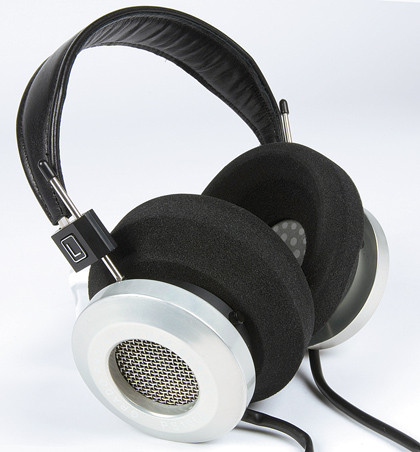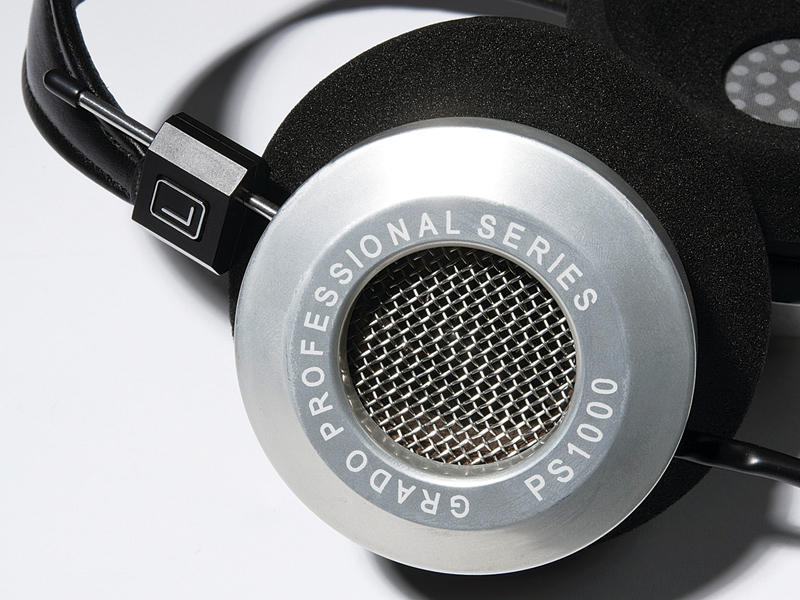TechRadar Verdict
Differences between this model and other top headphones are really more a question of taste than of quality, which is undeniably high. Strongly recommended for audition: be prepared for a shock!
Pros
- +
Tonally neutral to an extent most headphones and speakers only dream of, with detail to die for and effortless dynamics: revealing and involving in equal, large, measure
Cons
- -
The combination of weight and rather hard headband can make long-term wearer comfort a serious issue
Why you can trust TechRadar
For some time now, headphones having been getting some really good press. When we reviewed the Grado GS1000 just over three years ago, we hailed it as possibly the finest headphone we'd ever tested.
Last year, we had the pleasure of listening to the Sennheiser HD800 and Grado's revision of the GS1000, the GS1000i, both of which arguably surpass the original '1000.
Now Grado is back in the spotlight with its new top model, part of (in fact, currently all of) the 'Professional Series', the Grado PS1000.
Apart from anything else, this seriously raises the current maximum price for dynamic headphones (Sony once made an even more expensive model), but given our recent experiences with upmarket cans, we're happy to accept that it similarly raises the bar in performance terms.
So, what unknown delights might be waiting for us in our familiar recordings? Before we answer that question, we should look at what's new with this model.
It's clear that its design owes at least something to the GS1000, as the overall shape is very similar. Most obvious is the change from the wooden housing of the earpieces to metal, an unspecified alloy – it's described merely as 'a special non-resonant, very hard alloy'.
Actually it's not entirely non-resonant and if you tap it it's possible to hear a small amount of ringing, but we might be splitting hairs here because we weren't able to convince ourselves that any hint of that resonance was colouring the sound when we played music. No, our reservation regarding the alloy is much more prosaic and concerns its weight.
Sign up for breaking news, reviews, opinion, top tech deals, and more.
The GS1000 is towards the heavier end of the headphone market at something in the region of 300g, but the PS1000 surpasses anything we've ever encountered at 500g. That's a lot of headphone to wear and, in all honesty, we did find it somewhat oppressive.
For one thing, it's enough to make the headphones slide off if one tilts one's head forward or back and for another it makes the headband (always a Grado weakness in our experience) feel quite a burden after a while. We would really have liked a more generous thickness in the padding.
Inside each earpiece there is still some wood-selected mahogany, which supports the drive unit. The latter uses a large diaphragm which is vented and de-stressed, all in the interest of reducing resonance.
Just like loudspeakers, however, headphones are prone to such pesky side-effects as breakup at high frequencies, but with care, these factors can be reduced considerably, which helps maintain neutral and clear sound.
Grado tells us that this diaphragm is different from that in the GS1000 and apparently, it is driven by a re-configured voice coil too, so there's every reason to expect some sonic differences from the GS1000.

One feature that is the same is the distinctive earcups; large foam-rubber affairs which are comfortable in terms of both pressure on the head and 'aural claustrophobia' – there is very little sensation of the ears being closed in.
Among the few technical details released by Grado, is the fact that both the voice coils and the cable from the jack plug are made of ultra high-purity, long-crystal (UHPLC) copper.
In terms of basic specifications, the headphone has an impedance of 32 ohms, which is low enough to work with portable music players (don't laugh, we found just such a use, as you'll read below) and should be compatible with pretty much any headphone amp or output.
The cable is quite short and has a 6.35mm jack plug fitted, but Grado supplies an adaptor to 3.5mm and also a generous extension cable.
Sound quality
As well as playing familiar CDs through these headphones, we were lucky to be able to give them some serious use at a recording session, where it was possible to compare live sound with reproduced (recorded using a superb Royer stereo ribbon microphone, carefully positioned) with only a few seconds between the two.
This kind of comparison may not be the most demanding in terms of detail, but will show up tonal imbalance like anything.
Now we're not about to say that we couldn't tell the difference between live and recorded, but the tonal similarity was remarkably close. We've commented before in these pages that, up to a point, one can easily live with a degree of coloration in sound because one gets accustomed to it and filters it out.
It's usually pretty obvious at the outset, though, as swapping quickly between live and recorded sound gives the ear no chance to perform its 'inverse filtering' trick.
What impressed us with the PS1000 was that the tone of the instruments (piano, violin and cello) was clearly very accurate right from the first note, which means that the headphone's contribution was unusually small.
Having frequently used the GS1000 (original) in such a situation, we're in no doubt that the PS1000 beats it on grounds of neutrality. The GS is already very good, but the PS really steps up a gear. At the same time, it seems to transcend an obvious limitation of headphones in the bass – they can't make you feel low notes the way loudspeakers can.
In a few cases, though, they can make one believe that one has felt something. We found this with the Sennheiser HD800, as well as the GS1000 and the PS1000 might just be the best yet in this department.
Human perception can be tricked in all sorts of ways and evidently if the frequency balance is good, the bass extension just right and the distortion low, the ears and brain will between them create the illusion of real bass impact. The bottom few notes on a concert grand piano can be pretty visceral and that's what we heard – experienced – via the PS1000.
Returning to the world of familiar CDs, we were more than a little impressed with the amount of detail that was being brought out, even from recordings of no remarkable sonic merit. In this respect, we would place this headphone as roughly an equal to the HD800, which on the other hand we rated better than the GS1000.
Such rankings aside, however, we are in general terms talking about the sort of detail that the best loudspeakers on the planet will only give if fed by the finest ancillaries in a carefully optimised set-up – in other words, the kind of thing you just don't hear every day.
Even in areas where headphones tend to play second fiddle to speakers, notably imaging, the PS1000 manages a more than passable performance.
As for dynamics, they wonderfully combine the shock factor of sudden changes in level, which makes for excitingly rhythmic music-making, with the subtle, maybe almost imperceptible, swell of a gradual crescendo, which grows from quiet to deafening without the slightest sense of effort, but with spine-tingling final effect.

In any type of music, at any level, this is music reproduction of the highest order which convinces both instinctively and analytically. Hats off to Grado!
Follow TechRadar Reviews on Twitter: http://twitter.com/techradarreview
